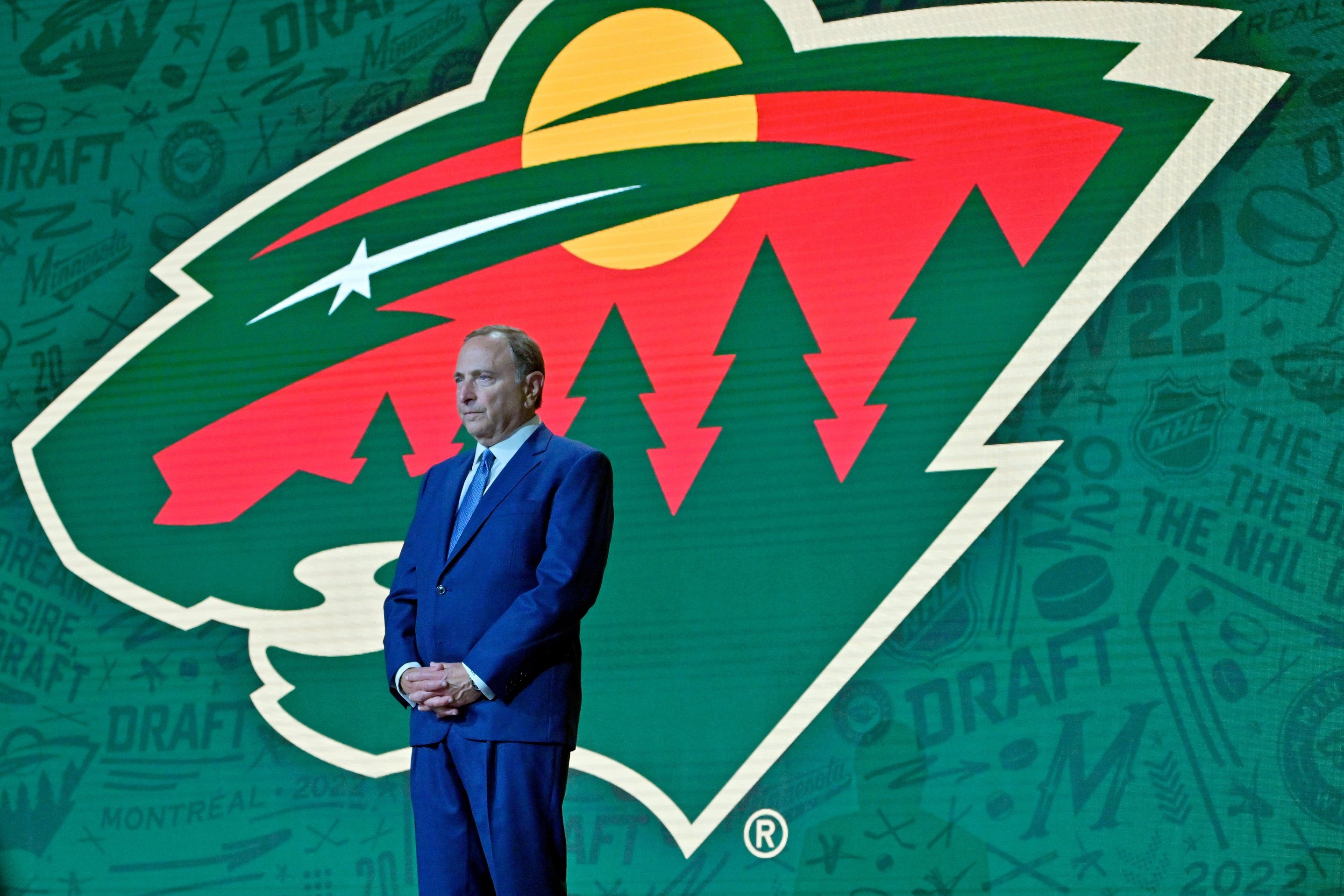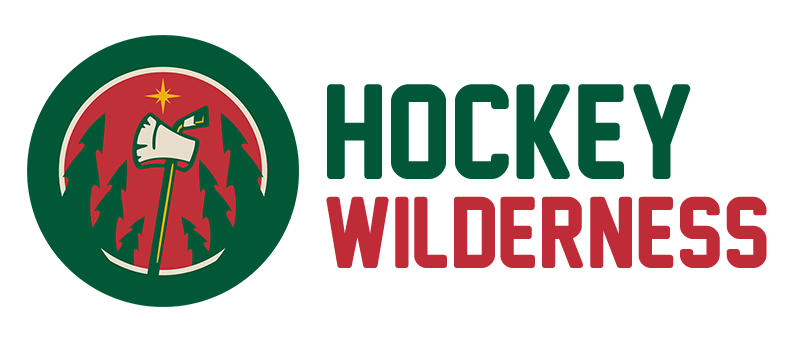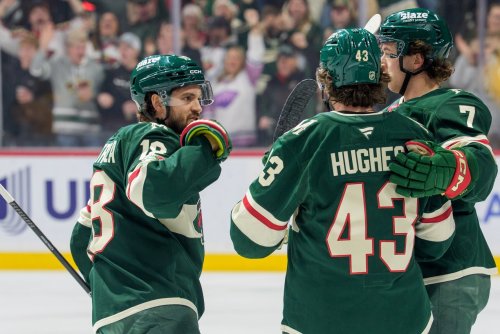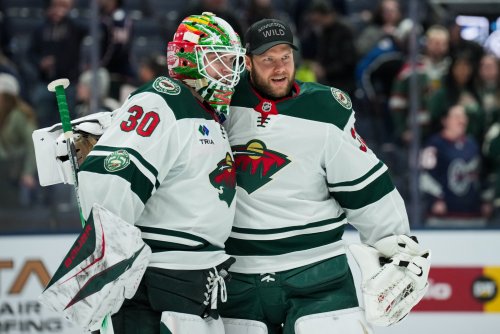
There's no more wondering why the Minnesota Wild were willing to package their first and third-round picks in last weekend's NHL Draft to secure defenseman David Jiříček. Not after seeing the draft play out. The talent pool dried up relatively quickly, and, much like the draft's decentralized broadcast, it had almost no real juice to it.
Going into the weekend, fans had to wonder how Judd Brackett and the Wild scouting staff were going to approach a weaker draft with limited ammunition. Would they go hard at as much talent as humanly possible, even if they have a low percentage of making the NHL? Or would they go the opposite direction and play it safe, hoping that the organization can produce an NHL player?
Brackett's staff has gone both ways in previous drafts on Day 2. They've taken falling skill in players like Riley Heidt (second round, 2023) and Aron Kiviharju (fourth round, 2024). They've gone for high-floor, lower-ceiling players in Rasmus Kumpulainen (second round, 2023) and Rieger Lorenz (second round, 2022). The Wild's scouts seem to go wherever the value is, and now that the draft is over, it's clear the direction they went this year.
With just five picks, it feels like Minnesota really focused less on top-tier upside and more on coming out of the draft with at least one player. Heading into the draft, the odds weren't in their favor. A second-round pick generally has a 30% chance of playing 200 NHL games. In the fourth round, that dips to 17%, then to 12% in the fifth. Even after trading Declan Chisholm to move up to a third fourth-round pick, the combined odds of the Wild getting an NHLer were only around 93.5%.
A healthy farm system can ill-afford gap years. The Wild might have a strong group of prospects now, but eventually, those guys will either make the NHL or move on to another organization. Unless the Wild become a free agent destination to the level of, say, the Tampa Bay Lightning, they're gonna need to backfill through the minors at some point, and there needs to be someone in Iowa.
So, generally speaking, it looks like "high floor" was the target. Maybe Minnesota isn't going to get many exciting, wild-card types that could turn into stars out of 2025. But if the Wild can get a couple of Carson Soucy, Connor Dewar, or Brandon Duhaime-type players out of five lower picks in a weaker draft? That's a win, especially if the Jiříček trade plays out like they hope.
So who are these guys, anyway?
52nd Overall: Theodor Hallquisth, RHD
Brackett's Take: "He's clearly a two-way defenseman. ... He's got a good IQ, he feels pressure, he can find his first read and get out of the zone. ... He plays with some bite, which is good, he's a good, competitive kid who can separate players from pucks."
The Wild's scouts seemed to be higher on Hallquisth than the scouting world at large, which generally put him at around a third-round value. Bob McKenzie's ranking -- which he compiles by talking to NHL scouts -- had him sneaking into the second, with a 61st overall placement.
When you call someone a "two-way defenseman" on draft day, that usually (though, if you look at Brock Faber, you'll know not always) means that their game will go one way: in the defensive direction. That might well be the case for Hallquisth. At 6-foot-2, Hallquisth can fill out his 172-pound frame and have some upside in his own zone.
However, according to Lassi Alanen's tracking (found in the Elite Prospects Draft Guide), which analyzed eight of his games in the Swedish Junior circuit, his strength was his transition game. His puck skills aren't anything to write home about (The Athletic's Corey Pronman rates them "Below Average"), but he's smart enough to make the most of them. He stood out at entering the offensive zone with control, and being able to be a puck-carrying option is a nice thing to have as a mostly defensive option.
Big, right-shot defensemen aren't easy to find, and it's good to have a project to develop behind the depth chart of Faber, Jared Spurgeon, and David Jiříček, as well as developing options like David Spacek. The good news: He's already got a cup of coffee with Oreboro's big club in the SHL, though the 17-year-old had a tough time holding his head above water. We'll see how he fares as a true 18-year-old next season.
102nd Overall: Adam Benák, Center
Brackett's Take: "At first blush, you see the size, but he's a dynamic offensive player. Great vision, skill, speed, [tenacity] at that size. ... He just has a pedigree for being able to create against bigger players."
Benák is probably the exception to the rule of high-floor, low-ceiling guys... probably. At 5-foot-7, the odds that Benák never steps on an NHL rink are much higher than an equivalent player at 6-foot-0. They just are. You have to be a special, special NHL player to force your way into the NHL at such a small stature.
The Wild are banking on the idea that he is, and with a fourth-round pick, it's a reasonable bet.
We can point out the players who are tiny and are carving out great NHL careers (Cole Caufield, Logan Stankoven) or who've even enjoyed Hall of Fame-worthy status (Martin St. Louis, Theo Fleury). That's absolutely unfair; if Benák were that caliber of player, we'd probably have seen him go in the first or second round, even in a league that's re-adopting the "Size Matters" position.
No, doing that probably sets the bar too high. It might be better to look at his upside through the lens of Mason Shaw. The Wild saw Shaw give them some productive time as a bottom-six NHLer, even with a nearly unprecedented four ACL tears. If Benák can avoid a similar injury history, we might get to see the kind of player Shaw could have been.
Even outlets that weren't high on Benák loved him. Elite Prospects ranked him 102nd in this class, but gave him the coveted "Got That Dawg In Him" designation. Looking at The Athletic's Scott Wheeler, who ranked him 37th, his assessment paints a bright picture for the Wild's new Short King:
He’s a superb facilitator and passer. It can feel, because of his anticipation, smarts and skating, like he’s constantly one step ahead of the game when he’s playing against his peers. And while he’s small, he’s competitive enough, he stays on pucks and tracks, he’s good on stick lifts, he’s fearless, he defends well.
Wheeler, in addition to other Benák boosters, also notes that his father was 5-foot-10, which gives him some room to grow. Maybe "Wait until he hits puberty" isn't the No. 1 thing you want to hear about a prospect. Still, if he's special enough to get attention at 5-foot-7, if he can grow an inch or two, that probably boosts his chances by a lot, even if the odds he sticks at center remain low.
121st Overall, Lirim Amidovski, RW
Brackett's Take: "First thing you know about him is the speed. He plays with a reckless abandon, he's a real heavy forechecker. ... He's sort of a heat-seeking missile type of player."
This is your Brandon Duhaime-type player. Elite Prospects' pitch matches Brackett's assessment nearly word-for-word: "A missile on skates." So, you know he makes a good impression.
After noting that low-scoring OHLers tend not to make it to the show, EP declares, "Amidovski is a unique case. Playing an entirely translatable professional game, he could very well rise to the NHL if he continues to hone his abilities."
As much as teams want to reach for upside potential in the draft, every organization needs grinders. Wild fans have to know this, after watching the team pay a premium to bring in Yakov Trenin to fill that exact gap once Duhaime, Dewar, and Shaw left the organization. Every team is going to get these players, so you might as well grow your own.
Still, there's some sneaky upside with Amidovski, much like there was with Brandon Duhaime. While not a skilled goal scorer, Amidovski gets to the net regularly, according to Mitchell Brown's tracking at Elite Prospects. He also earns high marks in virtually every defensive metric, so who knows? The Wild could be looking at a future fan favorite.
123rd Overall, Carter Klippenstein, Center
Brackett's Take: "Plays with an abrasive, physical nature, too, and will stand up for teammates when he has to. Shot-blocker, good penalty killer. ... [He's] gonna be a really rugged, two-way, maybe Mason Marchment-type of player."
Marchment is a high bar to get to: He's a two-time 20-goal scorer who has been a big part of multiple deep playoff runs. But if you see that potential in a fourth-round prospect, you've got to take it. It's a victory to get a player who brings even half of Marchment's skill set to the table at that spot.
We can bet that Brackett and Co. have seen Klippenstein at his peak. Pronman, who ranked him 66th in the class, writes, "[He's] an easy player to like if you see his best games or shifts. ... He will be able to win a lot of battles versus pro defenders, and the hardness element in his game will make him a coach's favorite." Pronman grades his compete as "High-End," a distinction he bestowed on just 13 of his 125 top prospects in the class.
EP didn't rank him, but Brown is a fan. "Klippenstein is a power forward through and through," he wrote on March 14, before noting the following evening, "He’s a player on the cusp of a breakout. ... He could become a strong checking-line forward at the next level with his physical skills, motor, and engagement."
Klippenstein's numbers are not very good, especially for an older player in the class. He scored just 14 goals and 28 points for the Brandon Wheat Kings last season. But as an athlete, he tested off the charts. All About the Jersey notes that he finished in the top-10 of seven fitness tests at the Scouting Combine.
They also name-dropped William Espy's (of The Hockey Writers) NHL comparable of Wild Legend Nico Sturm. Hell yeah. That's a two-time Cup winner with a 300-game career. Heck, the Wild might target Sturm tomorrow. If Klippenstein is that caliber of player in six years, that's an incredible pick.
141st Overall, Justin Kipkie, LHD
Brackett's Take: "Kipkie's a player that we continued to track... and we saw great development the last couple of years. ... 6-foot-3, handles the puck well, moves it well. ... If he continues on this growth, we think he's a good late option for us."
The Arizona Coyotes (now Utah Mammoth) drafted Kipkie two years ago (160th overall, fifth round), but let him re-enter the draft despite going from "project" to "prospect" during that time. Kipkie had 33 points in 67 games during his draft year, increasing that to 52 in 67 games, and finally 62 in 64 games last year.
He breaks the mold of a Brackett defenseman a bit, in that his processing ability isn't his strength. "He has heavy feet and his hockey sense is average, which was likely [Utah's] issue," wrote Pronman in his draft grades. "But he’s a good-sized defenseman with legit hands and a big point shot who has been a top player in the WHL the last two seasons." Seems like a decent shot in the dark for Round 5.
Can fans get excited about this draft? Meh. Unless you group Jiříček as part of the haul, none of these players are going to rate as one of the Wild's top-10 prospects this summer. They might not even do it next summer, after players like Jiříček, Zeev Buium, Danila Yurov, Liam Öhgren, and Jesper Wallstedt potentially graduate to the NHL. Any one of them making the NHL full-time is beating the odds.
Still, the Wild didn't have much to go with entering 2025, and they came out of it with a collection of lower-ceiling players who could nonetheless fill out their roster five years down the road. It's not sexy, but it's a legitimate strategy. Whether it works remains to be seen, but at least you can see what the plan was over the weekend.
Think you could write a story like this? Hockey Wilderness wants you to develop your voice, find an audience, and we'll pay you to do it. Just fill out this form.
-
 1
1
-
 1
1







Recommended Comments
Join the conversation
You can post now and register later. If you have an account, sign in now to post with your account.
Note: Your post will require moderator approval before it will be visible.